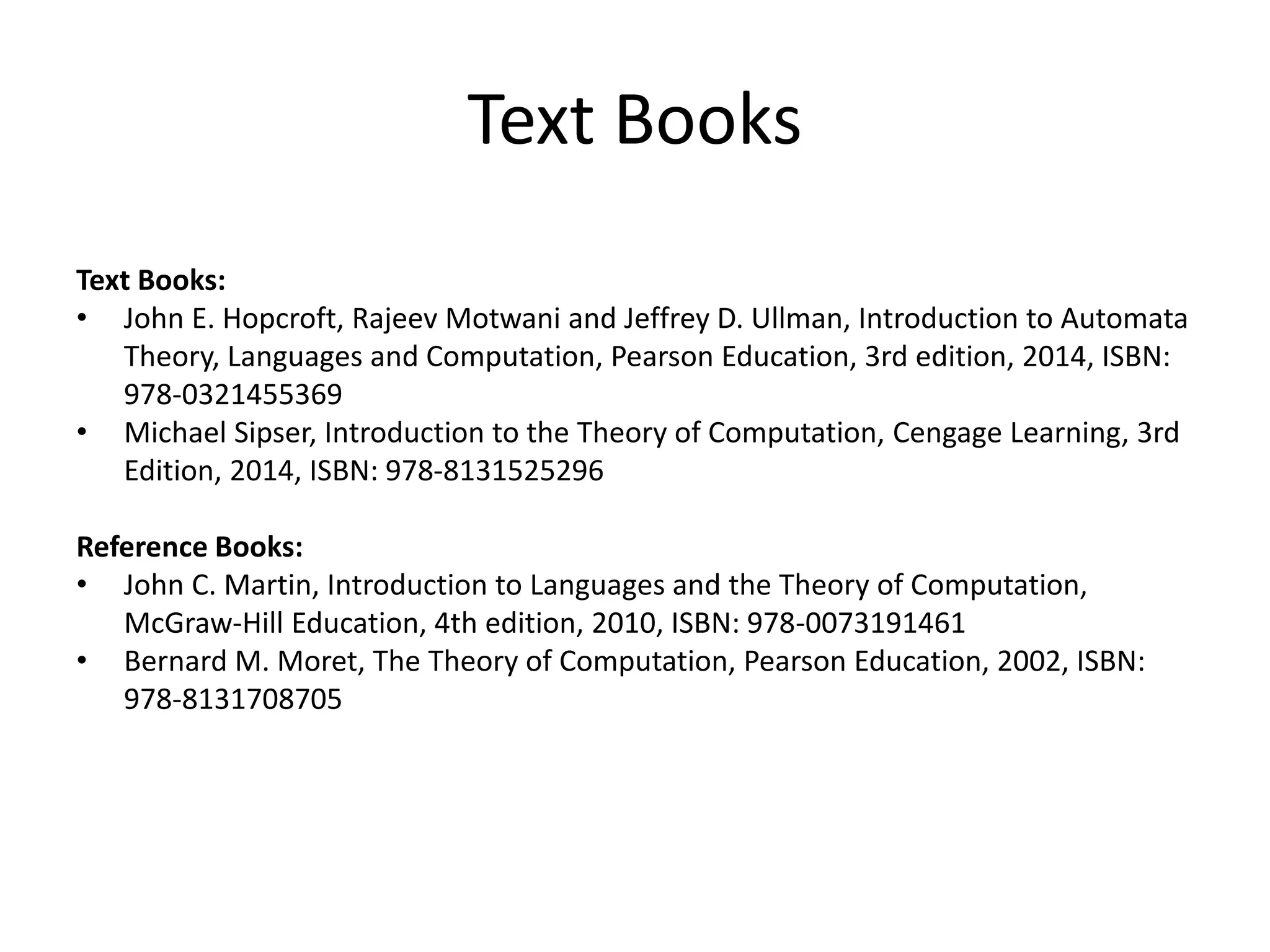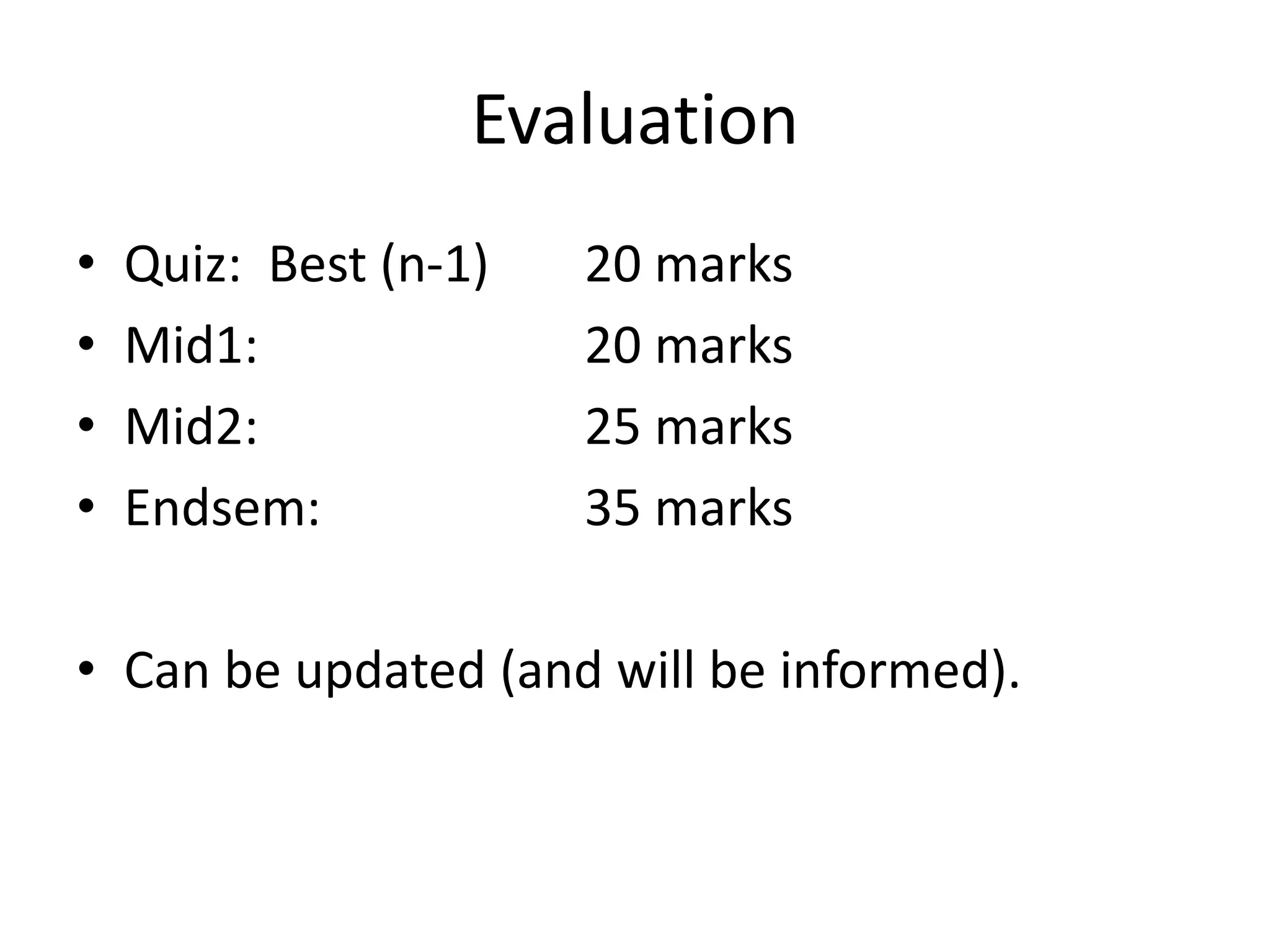This document serves as an introduction to a theory of computation course, discussing the foundational concepts like sets, decision problems, and the significance of strings in representing data. It outlines the syllabus, which includes topics like automata, regular expressions, context-free grammars, pushdown automata, Turing machines, and complexity classes. The evaluation criteria consist of quizzes and exams with specified marking schemes.
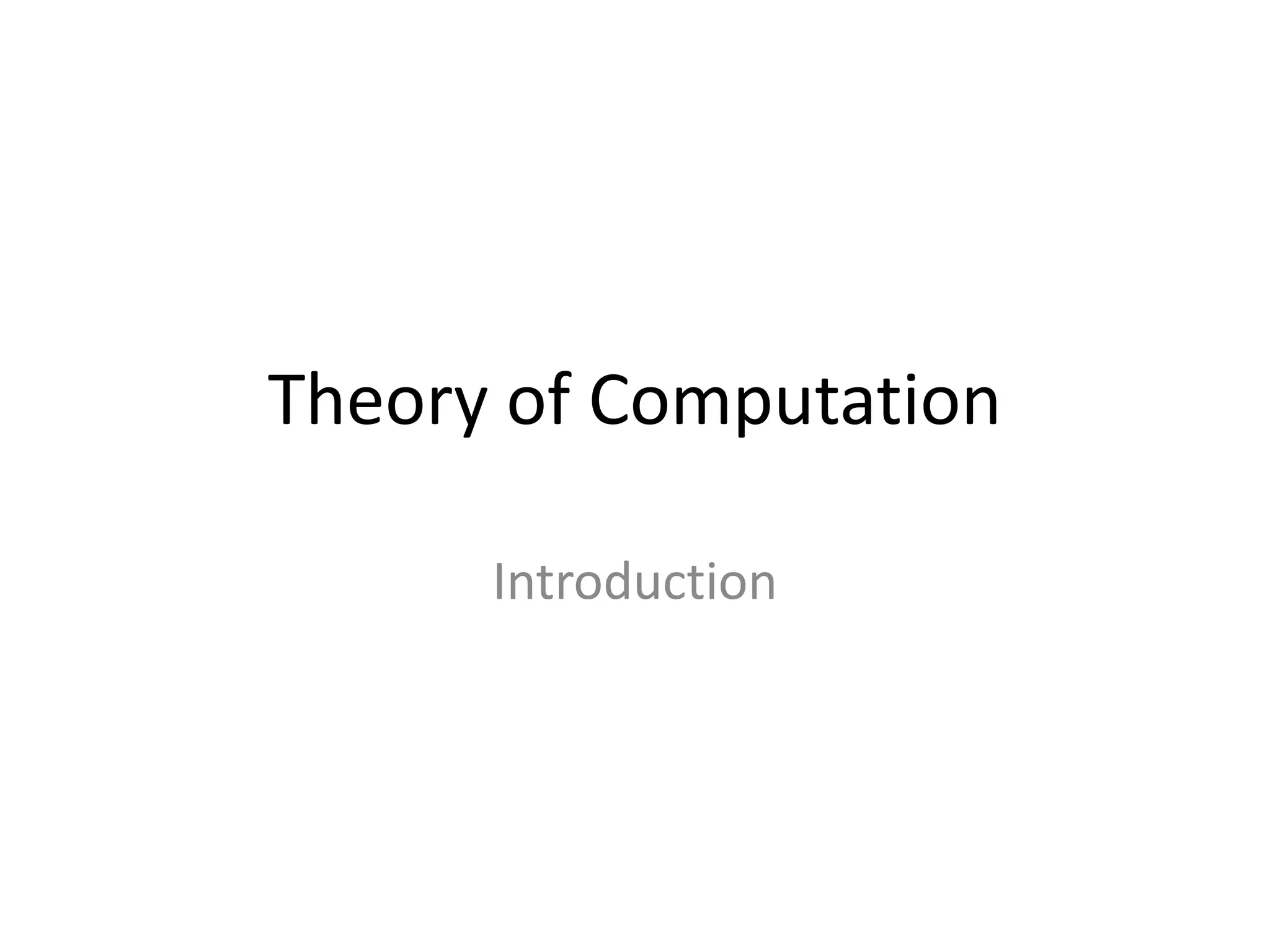
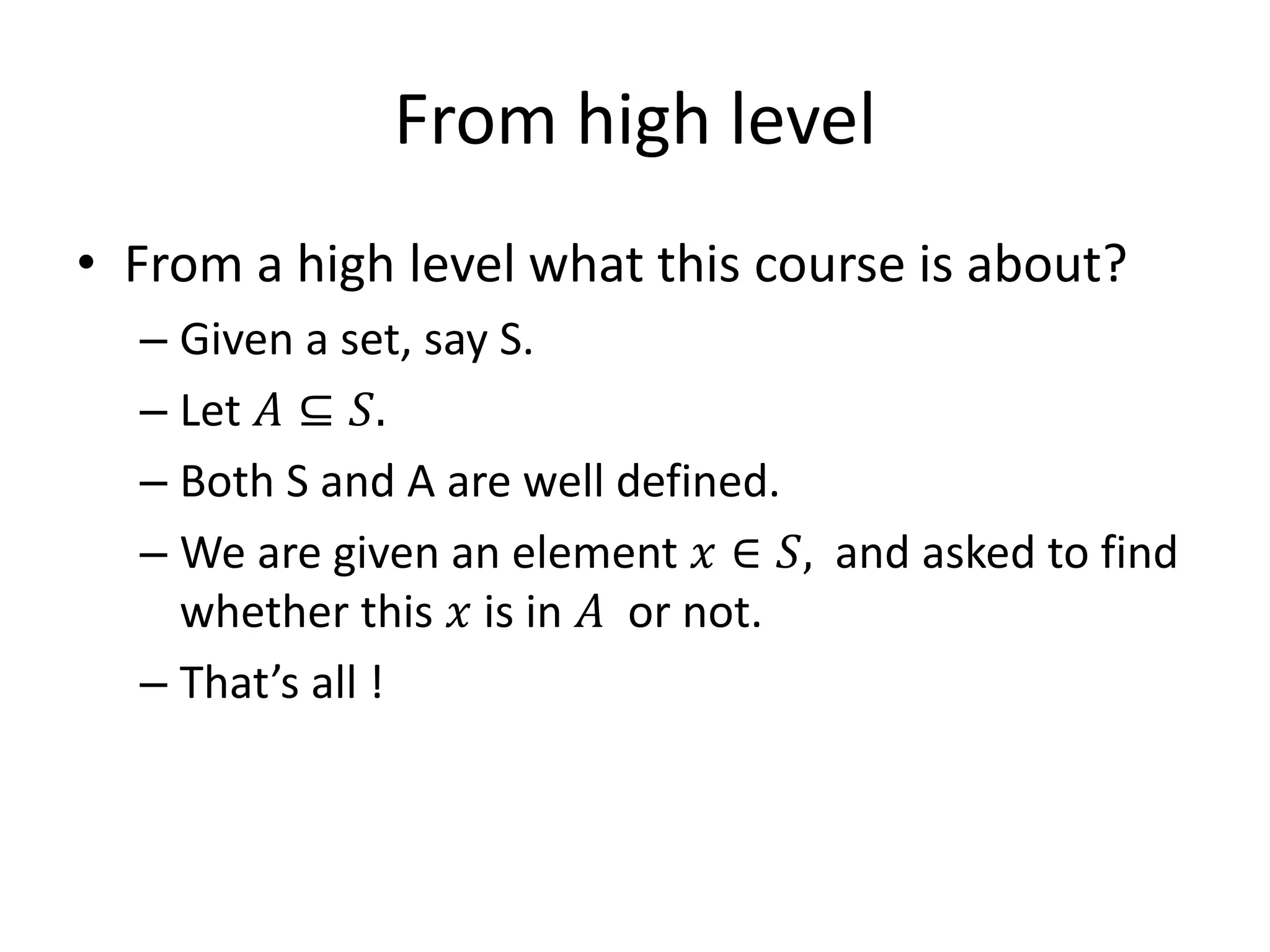
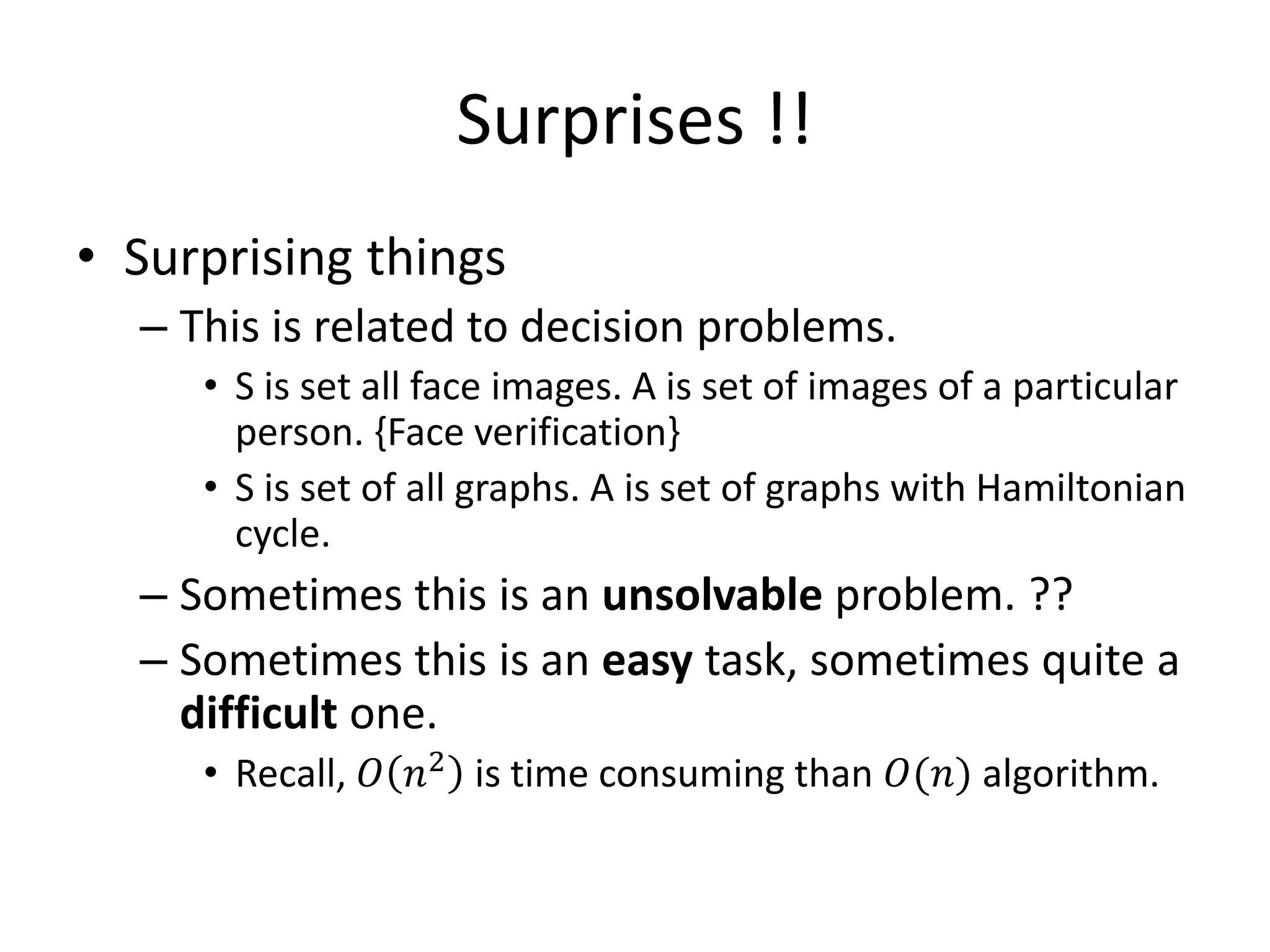
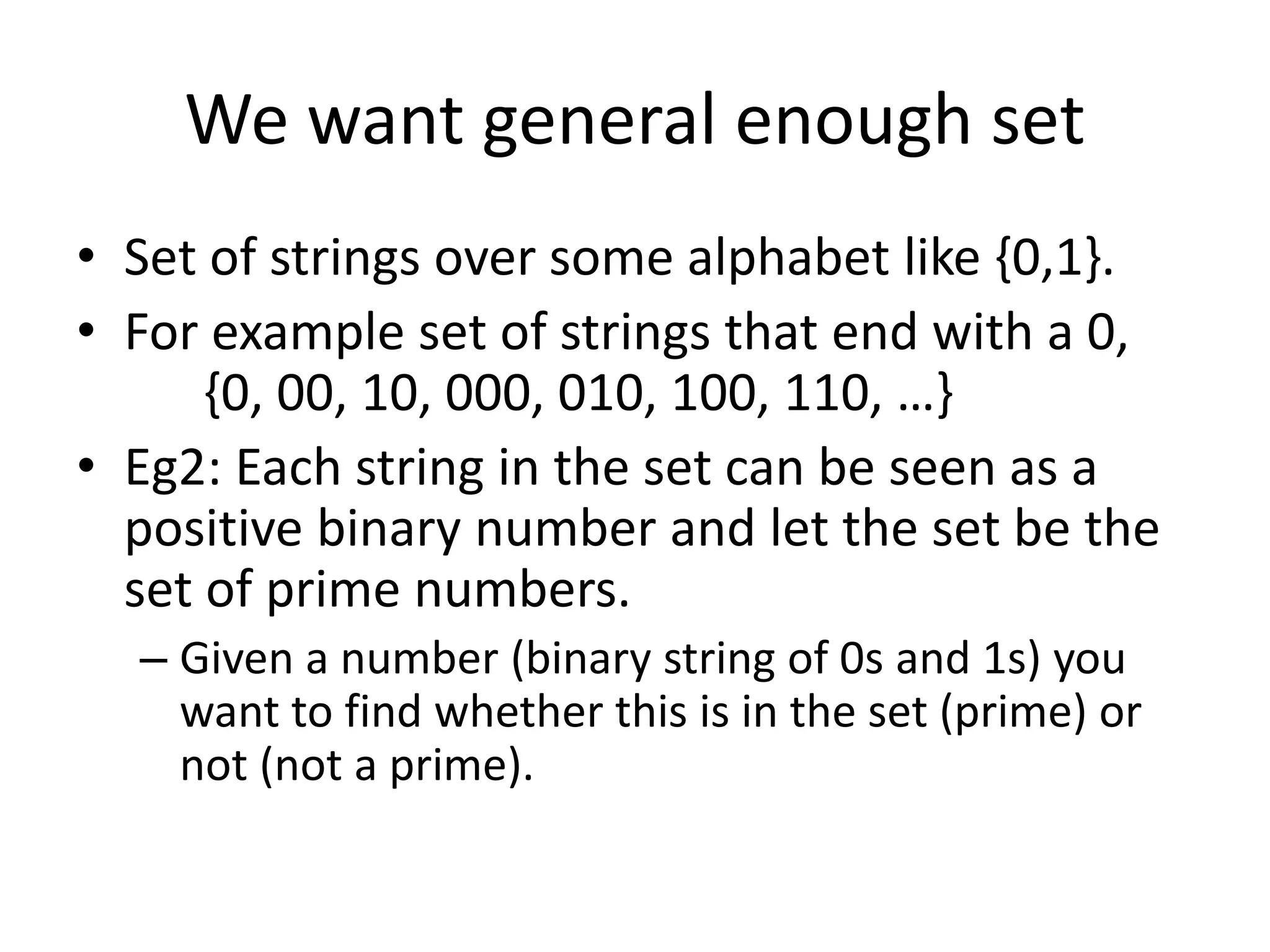
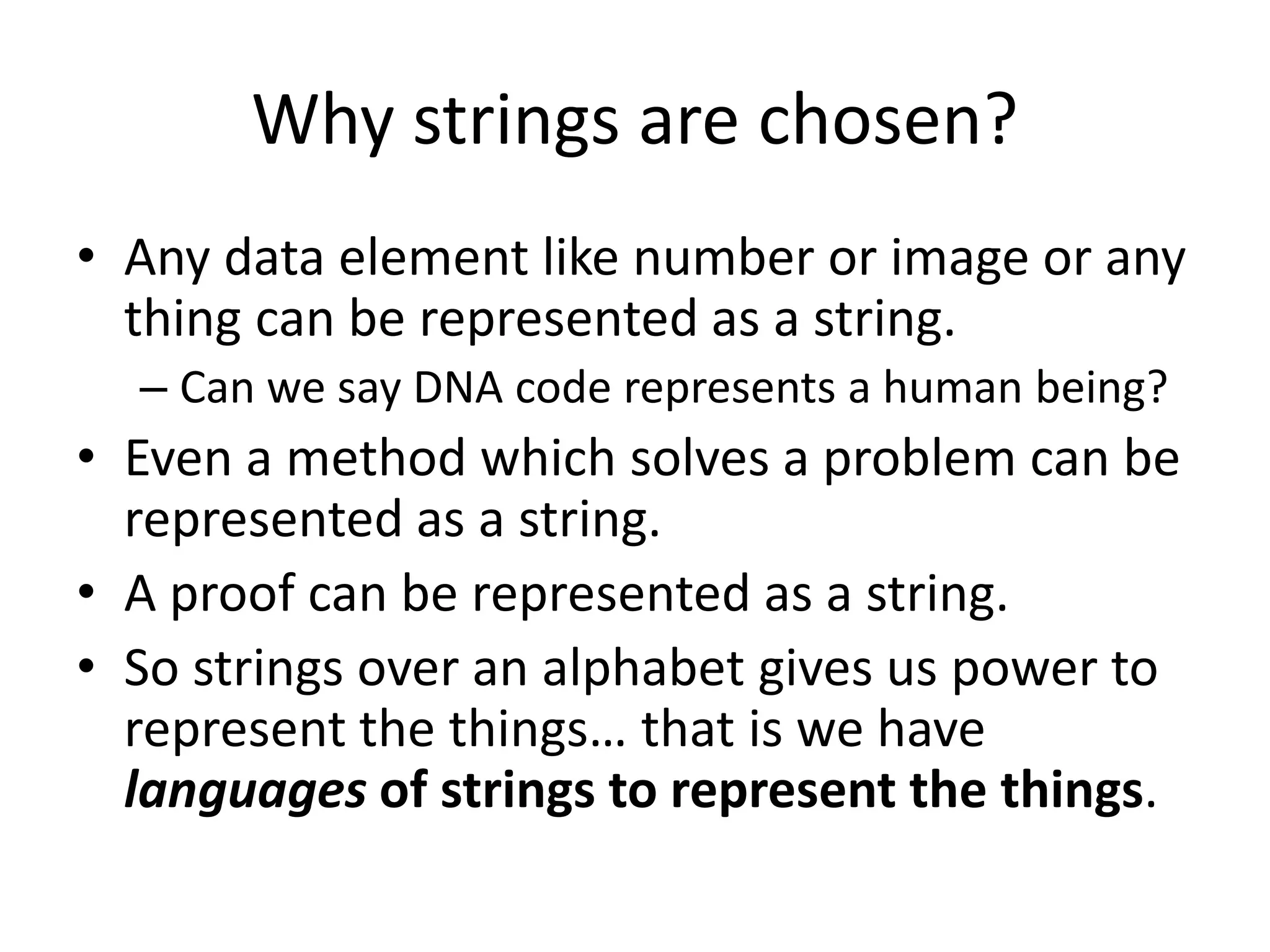
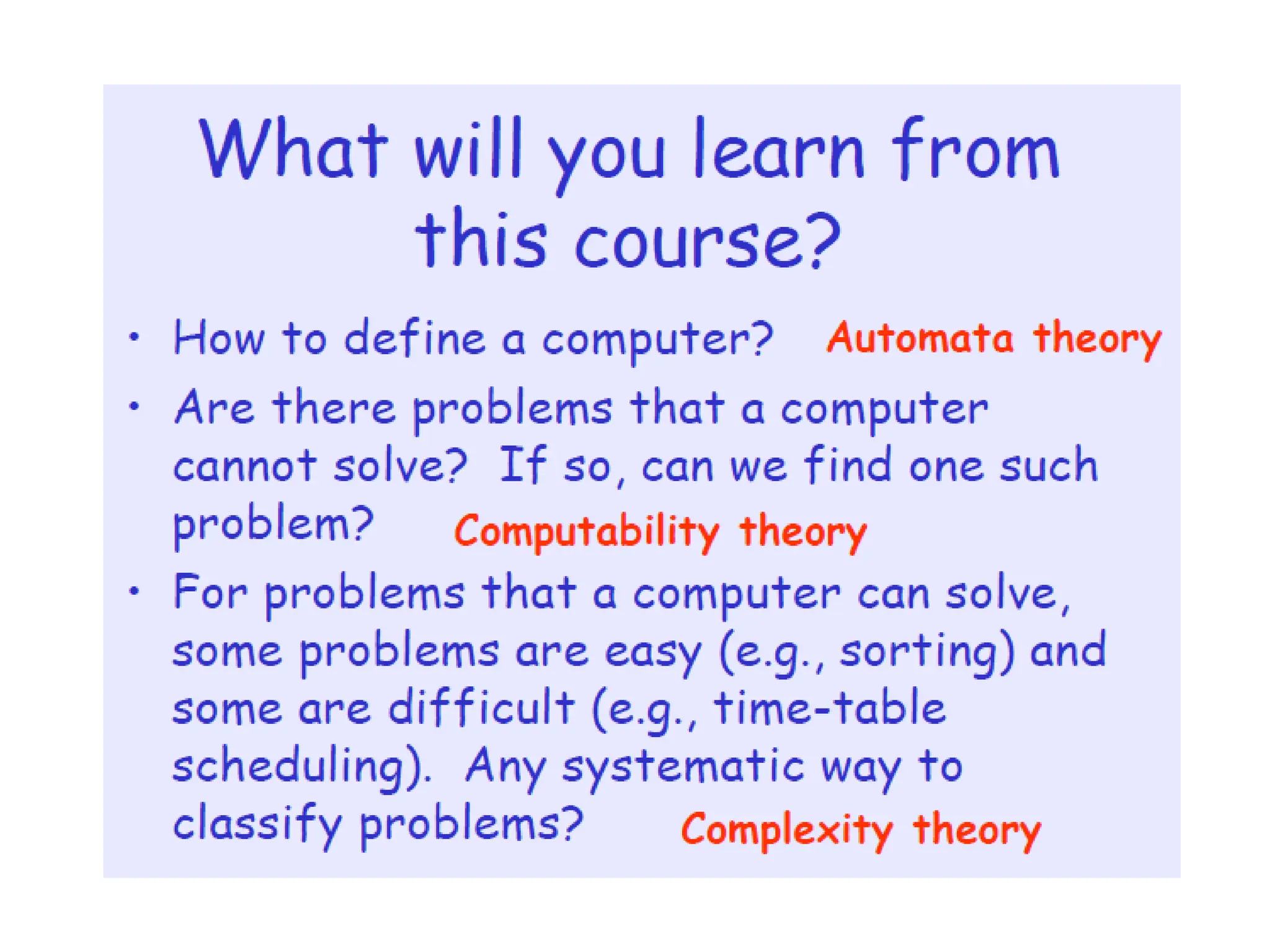
![Syllabus
• Syllabus:
• Unit – 1 [8 Hours]: Introduction - Alphabets, Strings and Languages, Automata and Grammars; Deterministic finite
Automata (DFA) - Formal Definition, Simplified notation, State transition graph, Transition table, Language of DFA;
Nondeterministic finite Automata (NFA) - NFA with epsilon transition, Language of NFA, Equivalence of NFA and
DFA, Minimization of Finite Automata, Distinguishing one string from other
•
Unit – 2 [8 Hours]: Regular Expression (RE) - Definition, Operators of regular expression and their precedence,
Algebraic laws for Regular expressions; Relation with FA - Regular expression to FA, DFA to Regular expression; Non
Regular Languages - Pumping Lemma for regular Languages, Application of Pumping Lemma; Properties - Closure
properties of Regular Languages, Decision properties of Regular Languages, Applications and Limitation of FA
•
Unit – 3 [8 Hours]: Context Free Grammar (CFG) - Definition, Examples, Derivation, Derivation trees; Ambiguity in
Grammar - Inherent ambiguity, Ambiguous to Unambiguous CFG; Normal forms for CFGs - Useless symbols,
Simplification of CFGs, CNF and GNF; Context Free Languages (CFL) - Closure properties of CFLs, Decision
Properties of CFLs, Emptiness, Finiteness and Membership, Pumping lemma for CFLs
•
Unit – 4 [8 Hours]: Push Down Automata (PDA) - Description and definition, Instantaneous Description, Language
of PDA; Variations of PDA - Acceptance by Final state, Acceptance by empty stack, Deterministic PDA; Equivalence
of PDA and CFG - CFG to PDA and PDA to CFG
•
Unit – 5 [8 Hours]: Turing machines (TM) - Basic model, definition and representation, Instantaneous Description;
Variants of Turing Machine - TM as Computer of Integer functions, Universal TM; Church’s Thesis; Language
acceptance by TM - Recursive and recursively enumerable languages;
•
Unit – 6 [8 Hours]: Decidability - Halting problem, Introduction to Undecidability, Undecidable problems about
TMs; Complexity - Time Complexity, Problem classes - P, NP, NP-Hard, NP-Complete.](https://image.slidesharecdn.com/1introduction-240702160954-eb11e155/75/Theory-of-Introduction-in-Computer-Science-7-2048.jpg)
